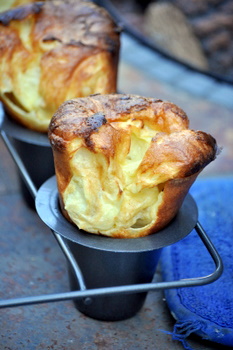Pie crust is typically made with just a few ingredients: flour, water, salt and fat. The fat is usually butter or shortening, and occasionally a little bit of sugar or cinnamon makes its way into the crust for flavor. It’s a simple recipe and it should be simple to make, but the reality is that it can be tricky to make a perfectly flaky pie crust. That said, it certainly doesn’t have to be tricky.
Butter is the ingredient that makes pie crusts flaky. When the pie crust bakes, the butter melts into the dough and two things happen. The fat from the butter tenderizes the dough, making it tender, and the water in the butter evaporates, creating a little air pocket in the dough, making it flaky. You need that puff of air from escaping steam to create flaky layers, and this is why all butter recipes are the best for other super flaky recipes, such as puff pastry and croissants. Shortening and lard are solid fats that make crusts tender, but do not add flakiness because they do not have the water content that butter – which is about 80% fat and 20% water – does.
When you cut in the butter, whether you’re working by hand or pulsing your dough in a food processor, you want your dough to be sandy and have pieces of butter about the size of a large pea still in it. Larger pieces of fat in the crust will result in a flakier texture. For this reason, it is good to stir in the water in the recipe by hand, rather than adding it into a food processor where it could become overmixed. Don’t use too much water or the dough will become tough, so add it in gradually.
Practice makes perfect when it comes to pie crusts, but using a recipe that is mostly butter, or all butter, is going to get you the flakiest crust every time.
More pie-making tips:
- Why do pie crust recipes approximate the amount of water?
- Butter vs Shortening in pie crust
- How to make a lattice pie crust
- How to patch pie dough
Double Pie Crust
2 1/2 cups all purpose flour
1/2 tsp salt
1 tbsp sugar
3/4 cup butter, cut into 1 inch cubes and chilled
1/4 cup shortening, chilled
6-8 tbsp ice water
Whisk together flour, salt and sugar in a large bowl. Toss butter and shortening in the flour mixture, then rub in with your finger tips until mixture is coarse and no chunks larger than a large pea remain. Add in water and stir with a fork until dough starts to come together, then press dough into a ball with the palms of your hands. If dough is dry, add an additional tablespoon or two of water to pull the dough together.
Divide dough into two balls and wrap in plastic wrap. Refrigerate for at least one hour, and up to two days. Dough can be frozen for at least 2 months, well wrapped.
Makes 2 pie crusts.
Note: I usually use all purpose flour for pie crusts. You can also get great, flaky results with a blend of all purpose and whole wheat flour if you want to try a Whole Wheat Pie Crust recipe.





dena
November 17, 2010Thanks for posting the pie crust recipe. Based on your explanation, I’m probably using too much water. I’ll have to try it yet again.
BTW, can I use part margarine or all shortening? Sometimes I have to make a non-dairy pie.
Nicole
November 17, 2010Dena – You can use part margarine if you’re looking for a nondairy pie, and you can also use all shortening. All shortening will make a very crisp and tender crust. It will have a good texture, but it won’t be as flaky as a butter crust. Try adding a little vanilla extract or some ground cinnamon (or other spice) to your crust if you’re using all shortening because it doesn’t have the extra flavor of butter!
the blissful baker
November 17, 2010thanks for the tips! i’m still trying to master a perfectly flaky pie crust
Patty
September 17, 2011Butter… Can you tell I’m a newby? Why didn’t I think of that? I have tried olive oil… I did so because of the trans fats in shortening. It’s not the same but it works if you’re careful not to over-mix. I’m trying butter next!
Merry
September 18, 2011I gave up pie crust rolling frustration by switching to a recipe of flour, salt, sugar, shortening, water, egg and vinegar. It’s very easy to roll out and is tender, but not flaky. My question is, if I substituted butter for the shortening, would the crust work and be more flaky without losing the ease of rolling? Would I substitute the same amount of butter for the shortening?
darlene
November 19, 2011this is a flakey crust melt 1 stick of butter,then add 1 cup of flour,and mix until thick, off the heat, cool a little and pat into pan, pie will never have a soggy crust
Nicole
November 27, 2013Merry – The crust recipe you are describing is more of a tart crust than a pie crust. Butter won’t necessarily make it more flaky, because flakiness comes as a result of the dough-making process. Cutting the butter/shortening/fat in large chunks is what leads to a flaky dough. It will, however, have more flavor than the shortening version and you should substitute the same amount if you want to give it a try.
sharee
November 13, 2014I wanted to ask about the use of lard and half butter in pie crust and the difference in texture from other butter/shortening recipes.